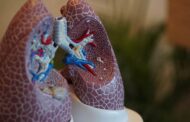The technique offers a potential approach to treat infections by multi-drug resistant bacteria.
Researchers from North Carolina State University have developed a de facto antibiotic “smart bomb” that can identify specific strains of bacteria and sever their DNA, eliminating the infection. The technique offers a potential approach to treat infections by multi-drug resistant bacteria.
“Conventional antibiotic treatments kill both ‘good’ and ‘bad’ bacteria, leading to unintended consequences, such as opportunistic infections,” says Dr. Chase Beisel, an assistant professor of chemical and biomolecular engineering at NC State and senior author of a paper describing the work. “What we’ve shown in this new work is that it is possible to selectively remove specific strains of bacteria without affecting populations of good bacteria.”
The new approach works by taking advantage of a part of an immune system present in many bacteria called the CRISPR-Cas system. The CRISPR-Cas system protects bacteria from invaders such as viruses by creating small strands of RNA called CRISPR RNAs, which match DNA sequences specific to a given invader. When those CRISPR RNAs find a match, they unleash Cas proteins that cut the DNA.
The NC State researchers have demonstrated that designing CRISPR RNAs to target DNA sequences in the bacteria themselves causes bacterial suicide, as a bacterium’s CRISPR-Cas system attacks its own DNA.
“In lab testing, we found that this approach removes the targeted bacteria,” Beisel says. “We’re still trying to understand precisely how severing the DNA leads to elimination of the bacteria. However, we’re encouraged by the ease in specifically targeting different bacteria and the potency of elimination.”
The researchers tested the approach in controlled cultures with different combinations of bacteria present, and were able to eliminate only the targeted strain. “For example, we were able to eliminate Salmonella in a culture without affecting good bacteria normally found in the digestive tract,” Beisel says.
The researchers were also able to demonstrate the precision of the technique by eliminating one strain of a species, but not another strain of the same species which shares 99 percent of the same DNA.
Another benefit of the approach, Beisel says, is that “by targeting specific DNA strands through the CRISPR-Cas system, we’re able to bypass the mechanisms underlying the many examples of antibiotic resistance.”
The researchers are currently working to develop effective methods for delivering the CRISPR RNAs in clinical settings.
“This sets the stage for next-generation antibiotics using programmable CRISPR-Cas systems,” says Dr. Rodolphe Barrangou, an associate professor of food, bioprocessing and nutrition sciences at NC State and co-author of the manuscript.
The Latest on: Multi-drug resistant bacteria
[google_news title=”” keyword=”Multi-drug resistant bacteria” num_posts=”10″ blurb_length=”0″ show_thumb=”left”]
via Google News
The Latest on: Multi-drug resistant bacteria
- Researchers systematically investigate efficacy of CRISPR antimicrobial agentson April 25, 2024 at 1:28 pm
The antimicrobial potential of CRISPR-Cas systems is promising, yet how to best design or implement CRISPR nucleases remains poorly understood. An international team led by the Helmholtz Institute for ...
- Antibiotic Breakthrough: Revolutionary Chinese Study Paves Way for Superbug Defeating Drugson April 23, 2024 at 2:43 pm
New research reveals that fluorous lipopetides act as highly effective antibiotics. Bacterial infections resistant to multiple drugs, which no existing antibiotics can treat, represent a significant ...
- European Commission Approves Pfizer’s EMBLAVEO® for Patients with Multidrug-Resistant Infections and Limited Treatment Optionson April 22, 2024 at 5:08 am
Pfizer Inc. (NYSE: PFE) today announced that the European Commission (EC) has granted marketing authorization for EMBLAVEO® (aztreonam-avibactam) for the treatment of adult patients with complicated ...
- Researchers Unravel Mystery of How Phages Disarm Bacteriaon April 21, 2024 at 9:34 pm
Bacterial infections pose significant challenges to agriculture and medicine, especially as cases of antibiotic-resistant bacteria continue to rise. In response, scientists at Texas A&M AgriLife Resea ...
- Multi-drug resistant bacteria found on International Space Station mutate to become functionally distincton April 17, 2024 at 6:31 am
Principal Investigator Dr. Kasthuri Venkateswaran of NASA's Jet Propulsion Laboratory led a team that studied 13 strains of the bacterial species Enterobacter bugandensis that were isolated from the ...
- Researchers Discover Mechanism Behind How Phages Disarm Pathogenic Bacteriaon April 15, 2024 at 5:00 pm
These infections are especially common in healthcare settings, which often encounter drug-resistant bacteria. According to the Centers for Disease Control and Prevention, there were over 30,000 cases ...
- Warning: New Research Indicates That Your Pet Dog or Cat Could Be Spreading Deadly Superbugson April 15, 2024 at 2:08 pm
Pet dogs and cats in Portugal and the UK were found to harbor the same antibiotic-resistant bacteria as their owners. New research to be presented at the ESCMID Global Congress in Barcelona, Spain, ...
- Cats and Dogs Pass Antibiotic-Resistant Bacteria to Humanson April 13, 2024 at 7:04 am
Pets in Portugal and the UK were found to harbor identical antibiotic-resistant bacteria strains as their owners.
- Pet owners warned over horror antibiotic-resistant superbugs that 'can jump from cats and dogs'on April 13, 2024 at 6:40 am
Researchers have discovered evidence that multidrug-resistant bacteria is being passed from sick pets to their healthy owners in the UK and Portugal through touch, kisses, and picking up pet poo.
- Pet owners warned over horror antibiotic-resistant superbugs that 'can jump from cats and dogs'on April 13, 2024 at 5:41 am
Researchers have discovered evidence that multidrug-resistant bacteria is being passed from sick pets to their healthy owners in the UK and Portugal through touch, kisses, and picking up pet poo ...
via Bing News








